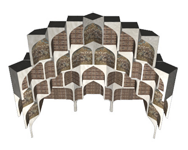

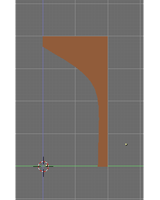
According to al-Kashi's rules, I first constructed the side view used for the 3D elements. For this I added a plane and created a Bezier curve to fit the descriptions. Then I converted the curve to a mesh in order to intersect it with the plane, obtaining the basic side view.
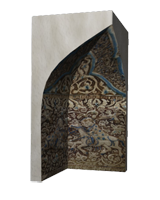
For the square element, I aligned two side views in right angle, extruded both of them (Edit Mode, top view), and joined the meshes.
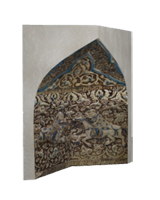
I placed two side views in top view (angle 135º) and extruded both of them. After each extrude step, I dragged the still marked side (indicated by marked vertices) to fit the rhombus ground view. Having done this with both side views, I joined the meshes (Object Mode).
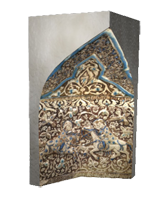
In contrast to the cells mentioned above, jug and almond can be constructed in a different way: not by extrusion but by spinning. I set spin steps to 1 and degree to 45. Then I placed the 3D cursor at the end of the basic side view (top view window), since it marks the rotation point. All that remains to do is click the "spin" button, then the top view window, and repeat once to receive a quarter octagon.
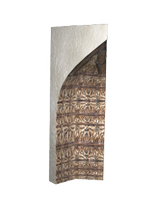
The almond element is constructed in basically the same way as the jug, I only set the spin steps to 2 this time.
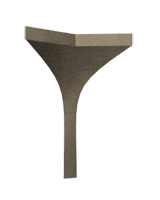
For the bipeds, I also used the spinning method, but with some additional editing. The spinning step resembles the description of jug and almond construction (settings: spin steps 2, degree 90). Then in the top view window choose "Vertex Loop" from the Select pulldown menu and mark the middle line of the figure. I scaled this part on the X axis (SKEY, XKEY), which in the end becomes the curved inner edge of the element.
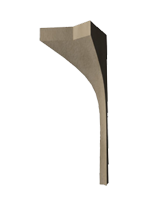
Again, the small biped is very similar to the large one, the only difference being a spin degree of 45.
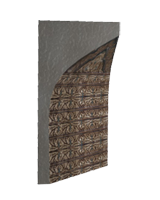
I rotated the basic side view by 45º. In Edit Mode, I selected all vertices (AKEY) and extruded (option: region) with CTRL pressed by two grid units. Finally, I rotated the still selected vertices by 45º and dragged them to fit together with the rest of the mesh (top view should be a right triangle). The point where the two (former) basic side views meet has to be the end where the element is open.
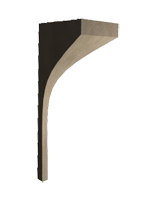
This element resembles the small biped, but it has no inner edge. Its construction is similar to the one just described. This time, however, I simply extruded the basic side view (without rotating it in advance), and rotated the still selected vertices by 45º.